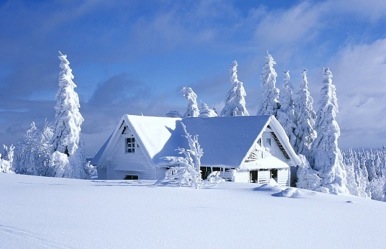Air Conditioning Efficiency

Building Design
A building location and surroundings play a key role in regulating its
temperature and illumination. In cooler climates, designing northern
hemisphere buildings with south facing windows and southern hemisphere
buildings with north facing windows increases the amount of sun ultimately
heat energy) entering the building, minimizing energy use, by maximizing
passive solar heating. Tight building design, including energy-efficient
windows, well-sealed doors, and additional thermal insulation of walls,
basement slabs, and foundations can reduce heat loss by %25 to %50.
Dark roofs in cooler climate and light roofs in warmer climates will decrease
the heating and cooling costs considerably.
Adding Insulation to houses
Unless your home was specially constructed for energy efficiency, you can
probably reduce your energy bills by adding insulation. Many older homes
have less insulation than homes built today, but even adding insulation to a
newer home can pay for itself within a few years.
To determine whether you should add insulation, you first need to find out
how much insulation you already have in you home and where is is. A
qualified home energy auditor will include an insulation check as a routine
part of a whole-house energy assessment. An energy assessment, also
known as home energy audit, will also help identify areas of you home that
are in need of air sealing. before you insulate, you should make sure that
your home is properly air-sealed.
If you do not want an energy assessment, you need to find out the following
for yourself:
-
•Where your home is, in not, and/or should be insulated.
-
•What type of insulation you have.
-
•The R-value and the thickness or depth (inches) of the insulation you have.
If you live in a newer house, you can probably get this information from the
builder. If you live in an older house, you'll have to inspect the insulation.
Inspecting and Evaluating Your Insulation
Check the attic, walls, and floors adjacent to an unheated space, like a garage
or basement. The structural elements are usually exposed in these areas,
which makes it easy to see what type of insulation you have and to measure its
depth or thickness (inches).
Inspect the exterior walls by using an electrical outlet:
-
1.Turn off the power to the outlet.
-
2.Remove the outlet cover and shine a flashlight into the crack around the
-
outlet box. You should be able to see if there is insulation in the wall and
-
possibly how thick it is.
-
3.Pull out a small amount of insulation if needed to help determine the
-
type of insulation.
-
4.Check outlets on all floors as well as old and new parts of you house. Just
-
because you find insulation in one wall does not mean that it is everywhere
-
in the house.
-
•Inspect and measure the thickness (inches) of any insulation in unfinished
-
basement ceilings and walls, or above crawl-spaces. If the crawl-space isn't
-
ventilated, it may have insulation in the perimeter wall. If you house is
-
relatively new, it may have insulation outside the basement or foundation
-
walls. If so, the insulation in these spaces won't be visible. The builder or the
-
original homeowner might be able to tell you if exterior insulation was used.
-
•Once you have determined the type of insulation you have in these areas
-
and its thickness (inches), see the government issued online insulation
-
fact sheet to determine the R-values of insulation previously installed
-
in your home.
Determining Recommended R-Values
When you find out the R-values of our insulation either from an energy
assessment, the home builder, or you own inspection, you can then use
the government issued Zip Cod Insulation Calculator to determine how
much insulation you should add and where you should add it for maximum
energy efficiency. The Zip Code Insulation Calculator provides insulation
cost estimates and a rate of return on your investment. To decide on the
type of insulation, please review Type of Insulation available to help you
decide what type to use and where to insulate.
Home > Energy Bills > Home Insulation




Clean & Green
Copyright ©2014 Team ReNewin. All Rights Reserved.